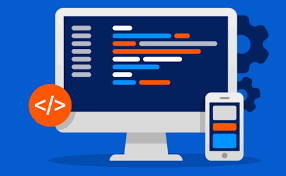Vue's watch provides three advanced options: deep, immediate and flush to enhance listening capabilities. 1. deep: true can listen to internal changes of objects or arrays, suitable for scenarios where attribute changes are required, but it will bring performance overhead; 2. immediate: true can execute a callback immediately during initialization, suitable for processing based on the initial value; 3. flush controls the timing of callback triggering, 'pre' is executed before rendering, 'post' is executed after rendering, and defaults to 'post', which is used to access the updated DOM or process data in advance. Use these options reasonably to improve code efficiency and logical clarity.

Vue's watch is a very practical tool to observe changes in responsive data and process them accordingly. However, in actual development, using only basic watch may encounter some limitations, such as being unable to listen for internal changes in the object, hoping to trigger a callback during initialization, etc.

At this time, you need to use several advanced options provided by Vue: deep , immediate and flush . Let’s talk about the functions and usage scenarios of these parameters.

1. deep: true — listen for deep changes in objects or arrays
When you want to listen for changes in an object or array, a normal watch will only be triggered when the entire object is replaced, and will not react to changes in the internal properties of the object.
For example:

data() {
return {
user: {
name: 'Tom',
age: 25
}
}
}If you only write:
watch: {
user(newVal, oldVal) {
console.log('user changed');
}
} That will only be triggered when the entire user object is replaced with another object. If you want to listen for changes in user.name or user.age , you need to add deep: true :
watch: {
user: {
handler(newVal, oldVal) {
console.log('user object or its properties changed');
},
deep: true
}
}In this way, no matter which property in the object changes, a callback will be triggered.
?? Note: Turning on
deepwill bring certain performance overhead, especially when the object is large or the structure is very complex, so it is recommended to use it as needed.
2. immediate: true — execute a callback immediately during initialization
Sometimes you hope that the watch callback function can be executed immediately when the component is created. For example, you want to do some logical processing based on the initial value, rather than wait until it changes before triggering.
For example:
watch: {
searchQuery: {
handler(newVal) {
console.log('Searching for:', newVal);
},
immediate: true
}
} In this example, the component will execute handler once it is loaded, and the current searchQuery value is passed in.
This method is very suitable for initializing operations that depend on a responsive variable.
3. flush: 'pre' | 'post' —— Control the callback triggering timing
Vue's responsive system is updated asynchronously, that is, when you modify the responsive data, the DOM update does not happen immediately, but is "queued" to process.
By default, the callback of watch is executed after the "queue" processing is completed (that is, after the DOM is updated). But you can change this behavior by flush :
-
'pre': The callback will be executed before rendering -
'post': The callback will be executed after rendering (this is the default value)
Examples of applicable scenarios:
- If you want to access the updated DOM element in
watch, it should be set to'post' - If you do not want to wait for DOM updates and want to process data as soon as possible, you can set it to
'pre'
Example:
watch: {
selectedId: {
handler(newId) {
this.fetchDetails(newId);
},
flush: 'post'
}
}This ensures that the relevant DOM has been updated before obtaining the details.
Let’s summarize a few key points:
- Use
deep: trueto listen for internal changes in objects/arrays - Use
immediate: trueto execute a callback immediately during initialization - Use
flushto control whether the callback is executed before or after rendering - Each option has applicable scenarios, do not blindly stack and avoid unnecessary performance losses
Basically that's it. Although these options seem simple, they can make the code more concise and clearer when used in actual projects.
The above is the detailed content of Advanced Vue Watcher Options: deep, immediate, flush. For more information, please follow other related articles on the PHP Chinese website!

Hot AI Tools

Undress AI Tool
Undress images for free

Undresser.AI Undress
AI-powered app for creating realistic nude photos

AI Clothes Remover
Online AI tool for removing clothes from photos.

Clothoff.io
AI clothes remover

Video Face Swap
Swap faces in any video effortlessly with our completely free AI face swap tool!

Hot Article

Hot Tools

Notepad++7.3.1
Easy-to-use and free code editor

SublimeText3 Chinese version
Chinese version, very easy to use

Zend Studio 13.0.1
Powerful PHP integrated development environment

Dreamweaver CS6
Visual web development tools

SublimeText3 Mac version
God-level code editing software (SublimeText3)

Hot Topics
 How can CSS be used to implement dark mode theming on a website?
Jun 19, 2025 am 12:51 AM
How can CSS be used to implement dark mode theming on a website?
Jun 19, 2025 am 12:51 AM
ToimplementdarkmodeinCSSeffectively,useCSSvariablesforthemecolors,detectsystempreferenceswithprefers-color-scheme,addamanualtogglebutton,andhandleimagesandbackgroundsthoughtfully.1.DefineCSSvariablesforlightanddarkthemestomanagecolorsefficiently.2.Us
 Can you explain the difference between em, rem, px, and viewport units (vh, vw)?
Jun 19, 2025 am 12:51 AM
Can you explain the difference between em, rem, px, and viewport units (vh, vw)?
Jun 19, 2025 am 12:51 AM
The topic differencebetweenem, Rem, PX, andViewportunits (VH, VW) LiesintheirreFerencepoint: PXISFixedandbasedonpixelvalues, emissrelative EtothefontsizeFheelementoritsparent, Remisrelelatotherootfontsize, AndVH/VwarebaseDontheviewporttimensions.1.PXoffersprecis
 What are the key differences between inline, block, inline-block, and flex display values?
Jun 20, 2025 am 01:01 AM
What are the key differences between inline, block, inline-block, and flex display values?
Jun 20, 2025 am 01:01 AM
Choosing the correct display value in CSS is crucial because it controls the behavior of elements in the layout. 1.inline: Make elements flow like text, without occupying a single line, and cannot directly set width and height, suitable for elements in text, such as; 2.block: Make elements exclusively occupy one line and occupy all width, can set width and height and inner and outer margins, suitable for structured elements, such as; 3.inline-block: has both block characteristics and inline layout, can set size but still display in the same line, suitable for horizontal layouts that require consistent spacing; 4.flex: Modern layout mode, suitable for containers, easy to achieve alignment and distribution through justify-content, align-items and other attributes, yes
 What is the significance of Vue's reactivity transform (experimental, then removed) and its goals?
Jun 20, 2025 am 01:01 AM
What is the significance of Vue's reactivity transform (experimental, then removed) and its goals?
Jun 20, 2025 am 01:01 AM
ReactivitytransforminVue3aimedtosimplifyhandlingreactivedatabyautomaticallytrackingandmanagingreactivitywithoutrequiringmanualref()or.valueusage.Itsoughttoreduceboilerplateandimprovecodereadabilitybytreatingvariableslikeletandconstasautomaticallyreac
 What are CSS Houdini APIs, and how do they allow developers to extend CSS itself?
Jun 19, 2025 am 12:52 AM
What are CSS Houdini APIs, and how do they allow developers to extend CSS itself?
Jun 19, 2025 am 12:52 AM
CSSHoudini is a set of APIs that allow developers to directly manipulate and extend the browser's style processing flow through JavaScript. 1. PaintWorklet controls element drawing; 2. LayoutWorklet custom layout logic; 3. AnimationWorklet implements high-performance animation; 4. Parser&TypedOM efficiently operates CSS properties; 5. Properties&ValuesAPI registers custom properties; 6. FontMetricsAPI obtains font information. It allows developers to expand CSS in unprecedented ways, achieve effects such as wave backgrounds, and have good performance and flexibility
 How can CSS gradients (linear-gradient, radial-gradient) be used to create rich backgrounds?
Jun 21, 2025 am 01:05 AM
How can CSS gradients (linear-gradient, radial-gradient) be used to create rich backgrounds?
Jun 21, 2025 am 01:05 AM
CSSgradientsenhancebackgroundswithdepthandvisualappeal.1.Startwithlineargradientsforsmoothcolortransitionsalongaline,specifyingdirectionandcolorstops.2.Useradialgradientsforcirculareffects,adjustingshapeandcenterposition.3.Layermultiplegradientstocre
 What are the challenges and solutions for maintaining CSS in large-scale applications?
Jun 14, 2025 am 12:15 AM
What are the challenges and solutions for maintaining CSS in large-scale applications?
Jun 14, 2025 am 12:15 AM
The key to maintaining CSS for large applications is organizational structure, naming specifications, and tool assistance. First, adopt component management, split styles and implement local scopes to avoid conflicts; second, unify naming specifications such as BEM, SMACSS or namespace prefixes to improve maintainability; third, use PostCSS, stylelint and other tools to achieve automated processing and code quality control. Although these methods are not complicated, they require teamwork and continuous maintenance to be effectively implemented.
 How can CSS be used to create print-specific stylesheets?
Jun 14, 2025 am 12:16 AM
How can CSS be used to create print-specific stylesheets?
Jun 14, 2025 am 12:16 AM
Creating print-specific stylesheets using CSS ensures that web pages are effective on the screen and when printing. First, use the @mediaprint rule to define styles that only take effect when printing, such as hiding the navigation bar, footer and sidebar; second, you can link a separate print style sheet print.css to keep style maintenance clearer; finally optimize readability and simplicity, such as removing background colors, using serif fonts, displaying link URLs, and adjusting the layout to adapt to paper characteristics.






